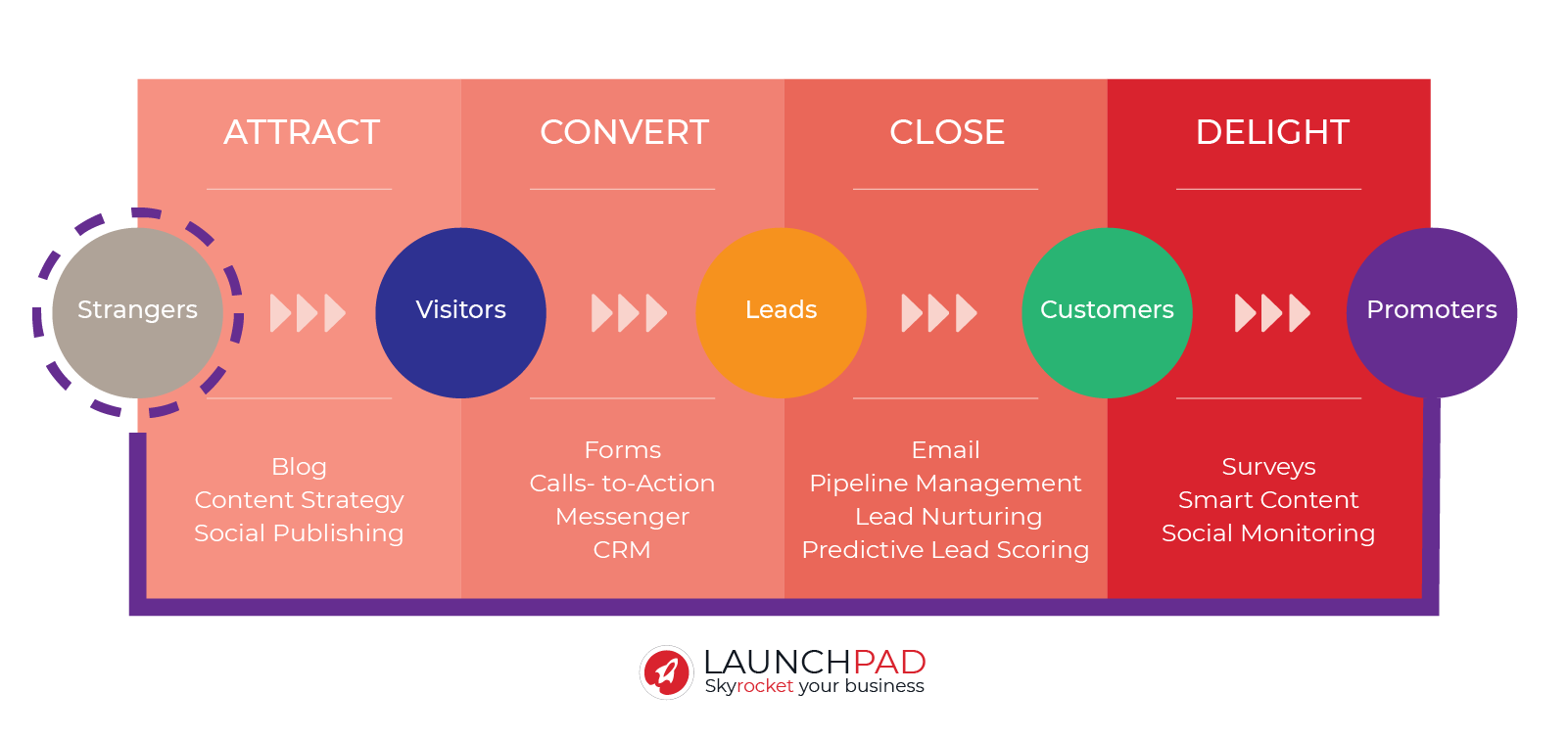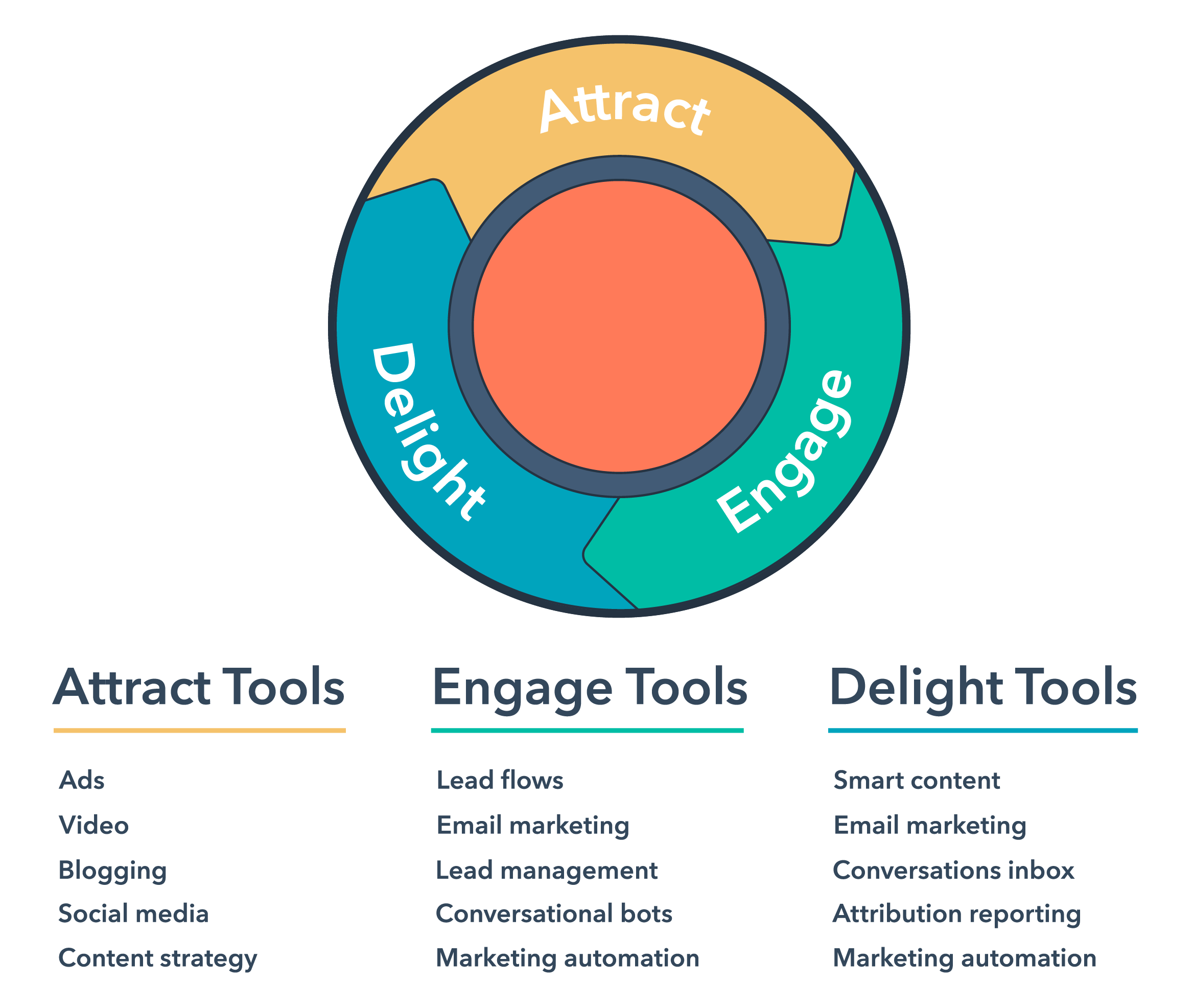
Here comes the Inbound Flywheel, taking over the reigns from the long-standing marketing funnel. Why is this so important? Read till the end to find out.
Great marketers know a painful truth: they aren't "the best marketers."
Marketers from Ogilvy to Jobs know that their customers are the real marketers.
Many years ago, that was untrue. Businesses had the power of consumer ignorance on their side and could fabricate news and information. That is why fake news preceded by false advertising, a pandemic that was put under checks and balances.
Now, customers hold all the power - in the form of a handheld device that offers unlimited information 24/7.
That power has made us less patient, less trusting, but most importantly, more knowledgeable.
So knowledgeable, you can tell from a mile away when you're about to be sold something and we all hate that feeling.
It feels icky, which causes distrust.
That's nothing new right? Even without looking at any data mined statistics (which there are tons of by the way), we all knew some form of this already.
So why still stick to the same outdated sales and marketing techniques?
The Inbound Flywheel and Inbound Methodology tackle this problem.
So what exactly is the inbound flywheel? Let's compare it to the original inbound marketing funnel to find out.
Inbound Flywheel vs. Inbound Funnel
The marketing funnel isn't dead but has merely taken a backseat to the inbound flywheel.
Instead of being the star of the show, the funnel works within the inbound flywheel to work as a complete mechanism.

We're all familiar with the original inbound methodology funnel: attract, convert, close and delight. Notice how the flywheel opts to replace the convert and close stage with engage?
"Funnels help produce customers but don't consider how those customers can help you grow."
Jon Dick, Hubspot VP of Marketing
The problem with the original funnel-like methodology was that at the end of a funnel, you lose momentum.
After acquiring your customer, how often did you complete the "delight" step by asking those customers for feedback and then calling it a day? We think, "we already have a customer support team, that should be enough." Is it?
Why is that a bad thing? We all know marketing to an existing customer is far cheaper than acquiring a new one.
A new customer costs 5x more than retaining current customers
AnnexCloud
We also know that an existing customer is the best way to gain new customers.
People tend to trust their friends and families 2x more than a business.
Hubspot
The inbound flywheel fixes this problem by framing businesses in a way that captures and measures efforts that feed into one another creating a perpetual customer delighting machine.
The flywheel stages are:

Attract
Prospects enter your inbound flywheel here. Very much like the original funnel, this is a prospect's first interaction with your company. You attract more of the right customers with relevant content at the right time.
With content strategy, you attract the kind of prospects who will eventually become your customers, targeting them with keywords or laser-focused ads.
Engage
These are prospects who are interested in becoming your customers. The goal is to make purchasing and decision making easy.
Having a conversation with these people to answer any questions allows you to build a lasting relationship through the medium of their choice. Email, bot, live chat, or even messaging apps.
Delight
Every one of your customers has the potential to become a promoter who will scream and shout about your company. Create memorable content your customers and prospects can share with their friends and family.
What makes the Inbound Flywheel differ is the removal of the convert and close phase and addition of customers in the middle. Psychologically, the whole process already seems a whole lot more customer-centric.
Visualize your business first as a funnel and then the inbound flywheel. It just feels RIGHT.
Customers are the center of attention and sales terms are replaced with engage. This way, instead of focusing all our efforts on acquiring, converting, and nurturing sales, we are more focused on keeping our prospects and customer's attention by engaging with them. Isn't that much more human?
Besides the shift in mindset, the Inbound Flywheel also gives us three factors to focus on for business growth.
Three factors that dictate your Inbound Flywheel's momentum
1. How fast does it spin?
2. How much friction is there?
3. How big is it and how much does it weigh?
How fast it spins
The speed of your Inbound Flywheel increases by applying more force where it yields the most result. Compared to the funnel, the flywheel makes the marketer focus on all aspects of marketing, from attract to delight and back to attract.
The flywheel helps identify misalignment between sales and customer success.
Reduce friction
Friction on your flywheel comes in the form of inefficiencies where your customers are losing momentum. To reduce friction, focus on improving conversion rates, delight customers at scale, and the organization of your teams.
Weight and Size
More delighted customers mean a heavier flywheel, which means there will be more momentum. The happier you make your customers, the faster your business grows.
Conclusion
The Inbound Flywheel embraces the inbound methodology wholeheartedly. It almost feels like it's managed to bridge marketing with humanity. So much so that sales has become something people can enjoy.



